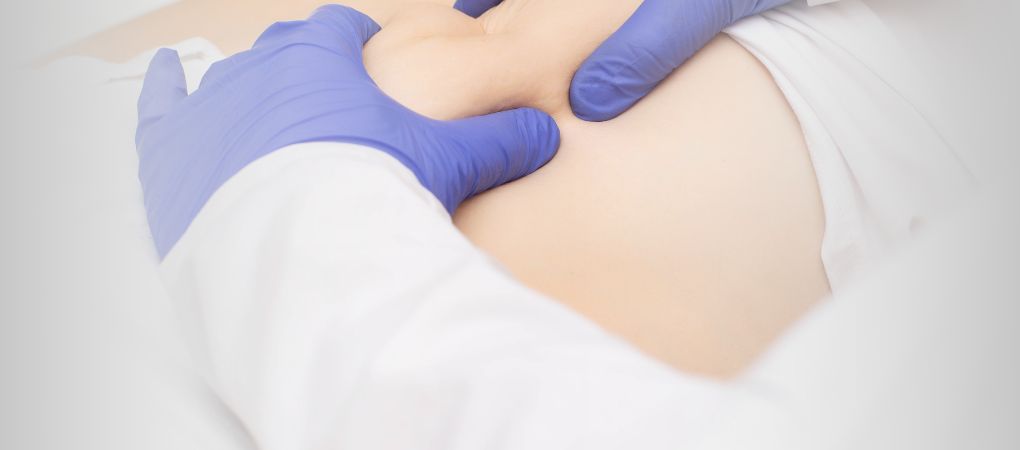Francesca Galiano
|
28/02/2023 - Last update 25/05/2023
Matias Chahab, Pamela Donnet, Daniel Hernandez | Year 2022
Case Report on Visceral Manipulation in Adolescent Idiopathic Scoliosis
Pathology:
Scoliosis
Type of study:
Case Report
Date of publication of the study’:
2022/Sep/01

Purpose of the study
- Objective: to show the benefits of visceral manipulation in case of adolescent idiopathic scoliosis
- Measured outcomes: Cobb angle, evaluation of the symptomes and adverse effects
Participants
- Number: 1
- Description: a 14-year-old girl. Born by unplanned cesarean delivery, with no history of back pain or family history of scoliosis. When she was 13 years and 6 months of age she received the diagnosis of adolescent idiopathic scoliosis from an orthopedist, spine specialist. No improvement was achieved through chiropractic and Global Postural Rehabilitation (GPR). After an X-ray showing a lumbar Cobb angle of 38.9° and a right thoracic curve of 32.3°, surgery was recommended. However, the parents decided to try OMT, making an appointment 4 months after the x-ray.
Interventions and evaluations
- Assessment of symptoms and adverse effects.
- X-ray performed 2 weeks after the second treatment and follow-up after 12 months
- The X-rays were taken in the same diagnostic center, according to the same instructions and at the same time of day.
- 2 sessions of OMT lasting up to 50 minutes, with an interval of a month and a half between each other.
- OMT: assessment of the patient in standing, sitting, prone and supine positions; indirect visceral manipulation treatment, performed by mobilizing the organs through contact with superficial structures, with associated osteoarticular treatment. Each technique lasted a maximum of 40 seconds to avoid irritation of the vascular and nervous systems.
- Recommendations on life style (physical activity and nutrition).
- Visceral manipulation performed by two osteopaths: one with 10 years of experience, with a certification in visceral manipulation issued by the Barral Institute, and the second with 6 years of experience, also with Barral Institute qualification in visceral manipulation.
Results
The patient grew in height by 1cm between the two sessions of OMT and reported feeling more relaxed, breathing better, being able to move better and being able to do more things.
The new X-ray showed a lumbar Cobb angle of 32.1°, a thoracic curve of 34.3°, and a minor dorsal kyphosis.
At the follow-up, 12 months after the second session of OMT, period during which the girl took monthly sessions of OMT with GPR, her parents reported that their daughter was healthy and well, which made her decide again to put surgery on hold. The patient grew another cm and reported eating more fruits and vegetables, swimming and feeling discomfort only after very long walks. Scoliosis was compensated in the orthostatic position, with a lumbar Cobb angle of 33.4° and a thoracic curve of 33.3°.
Neither adverse effects or complications were reported by the patient.
Discussion
OMT, as a holistic approach, can be a therapy sought by patients with adolescent idiopathic scoliosis as an alternative or supplement to exercises – whose scientific evidence is quite low – and the use of braces that tend to cause skin irritation, to limit movements and have negative consequences on body image and self-esteem. However, the OMT presents a scarcity of scientific literature on the subject.
The patient’s growth in height limits the assessment of the exact change of the Cobb’s angle. However, there has been a reduction in the lumbar Cobb angle of 6° and an increase in the thoracic angle of 2°, both of which, according to the recommendations of the Scoliosis Research Society, indicate success in conservative therapy. It is however particular that at the follow-up the thoracic curve has become the main curve.
According to the teachings of the Barral Institute, the right concave lumbar curve required the treatment of the uterus and attached structures, while the left concave thoracic curve the treatment of pericardium and attached structures.
A limitation of the study, besides being retrospective, was the administration of the OMT by two different practitioners, as the first practitioner could not make the second visit due to other commitments. No X-ray was taken directly before the first session of OMT, thus preventing an evaluation of any improvements due to previous treatments. In addition, no objective evaluation instruments, such as goniometers or inclinometers, were used.
More studies are necessary to justify the use of visceral manipulation in case of adolescent idiopathic scoliosis.
The review of Osteopedia
By Marco Chiera
Strengths: not only a manual approach but also targeted to the patient’s lifestyle, ie, nutrition and physical activity; graphical representation of the timeline; table that reports briefly the examination, treatment and recommendations; follow-up at 12 months; good discussion and presentation of the limitations of the study, with interesting ideas for future studies.
Limits: as every case report, it is difficult to generalize, as indicated by the authors themselves, and, moreover, we do not know if and how much the previous treatments had changed the angle of Cobb. Just as we do not know if the situation would have been resolved without other interventions, without OMT or only with changes in lifestyle. Some of the information discussed could have been put into earlier sections of the study.

Are you an osteopath?
Register and enjoy the membership benefits. Create your public profile and publish your studies. It's free!
Register now
School or training institution?
Register and enjoy the membership benefits. Create your public profile and publish your studies. It's free!
Register now
Do you want to become an osteopath? Are you a student?
Register and enjoy the membership benefits. Create your public profile and publish your studies. It's free!
Register now







